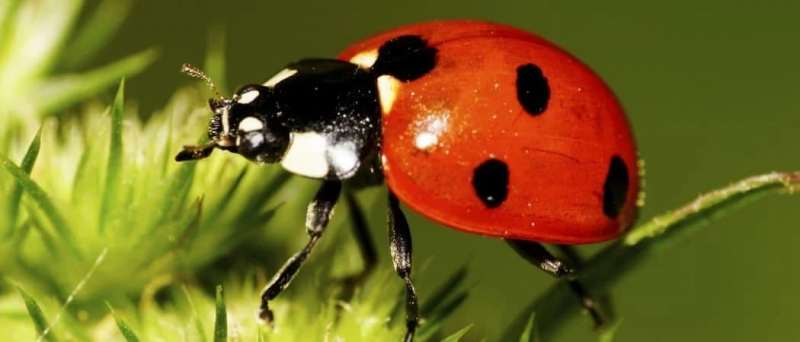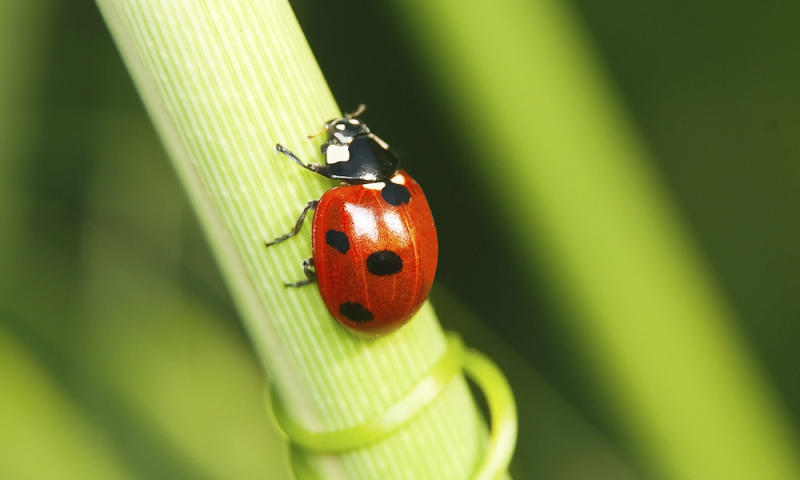Ladybug
Any of the around 5,000 widely dispersed species of ladybugs (family Coccinellidae; insect order Coleoptera), often known as ladybird beetles, got their names during the Middle Ages when they were referred to as "beetles of Our Lady". Ladybird beetles are typically 8 to 10 mm (0.3 to 0.4 inch) long and hemispherical in form. Ladybugs are not only pretty but cute, with their round bodies and the black polka dots that cover their elytra, which are often cheerful red, orange, or yellow. An illustration of the usual color pattern of ladybird beetles is the nine-spotted ladybird beetle (Coccinella novemnotata), which has four black dots on each reddish-orange wing cover (elytron) and one shared spot.
Since the life cycle lasts for roughly four weeks, numerous generations are created each summer. The long, slender, soft-bodied larvae prey on other insects and insect eggs. They are typically gray with blue, green, red, or black markings. After going through four growth phases, the larvae cling to a surface and pupate in their final larval skin. Every winter, several ladybird beetles typically hibernate nearby in large groups.












